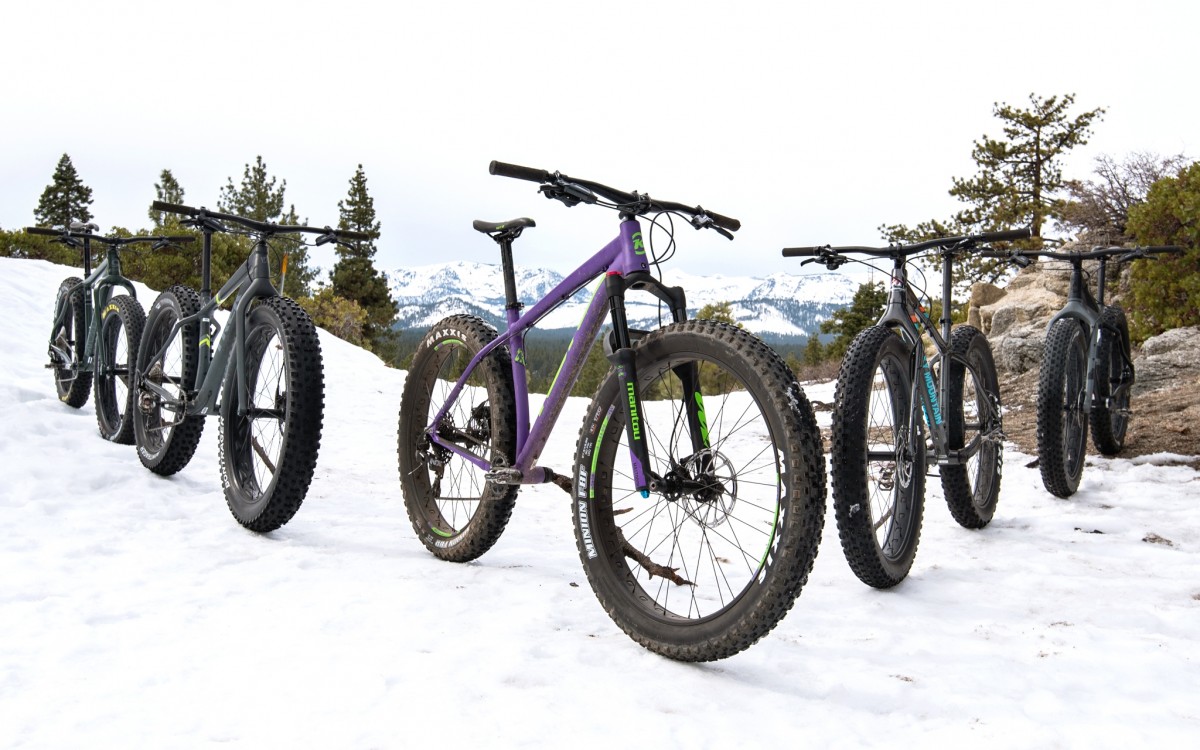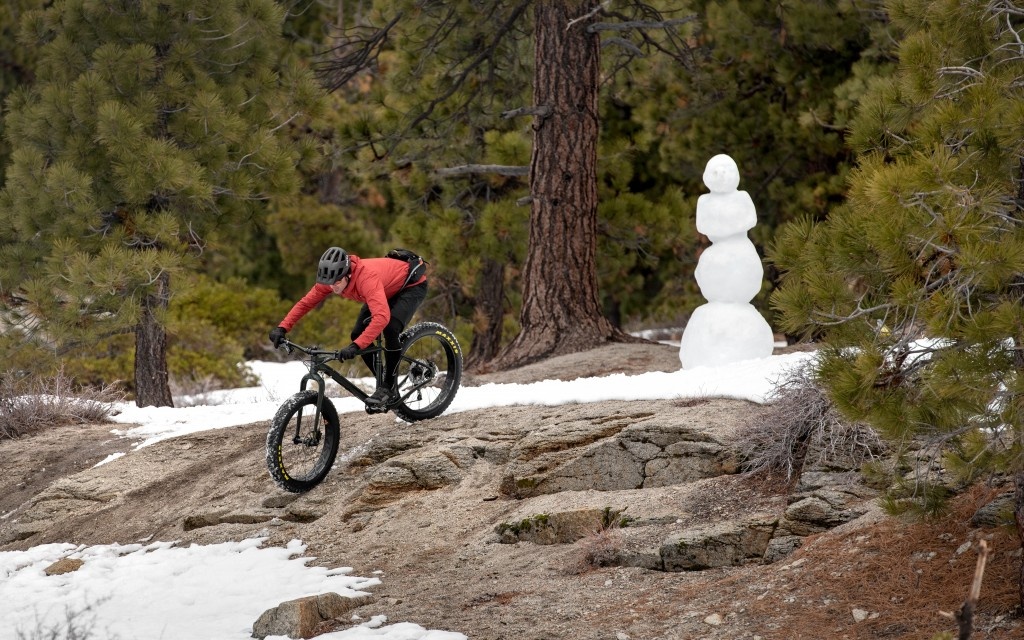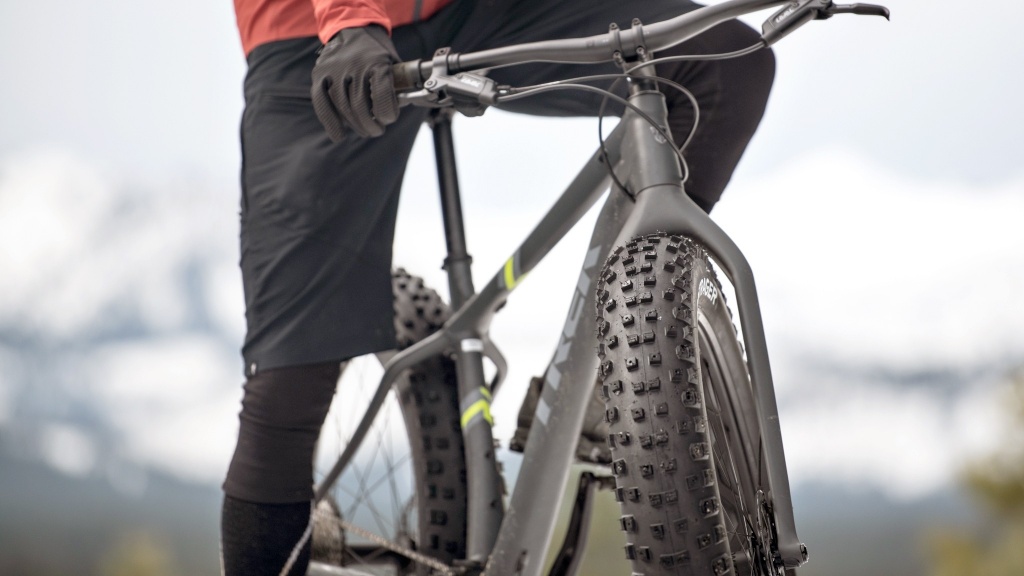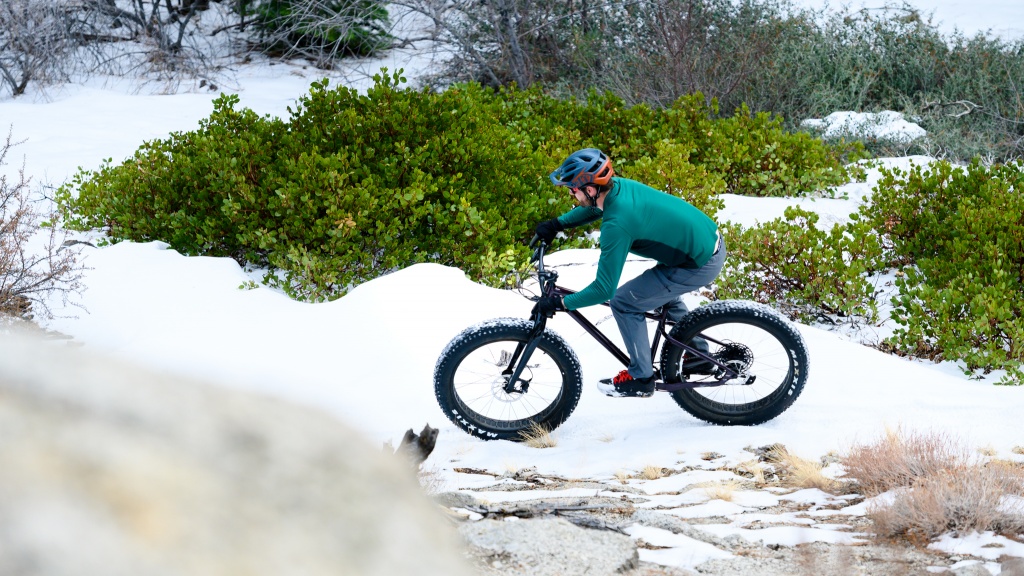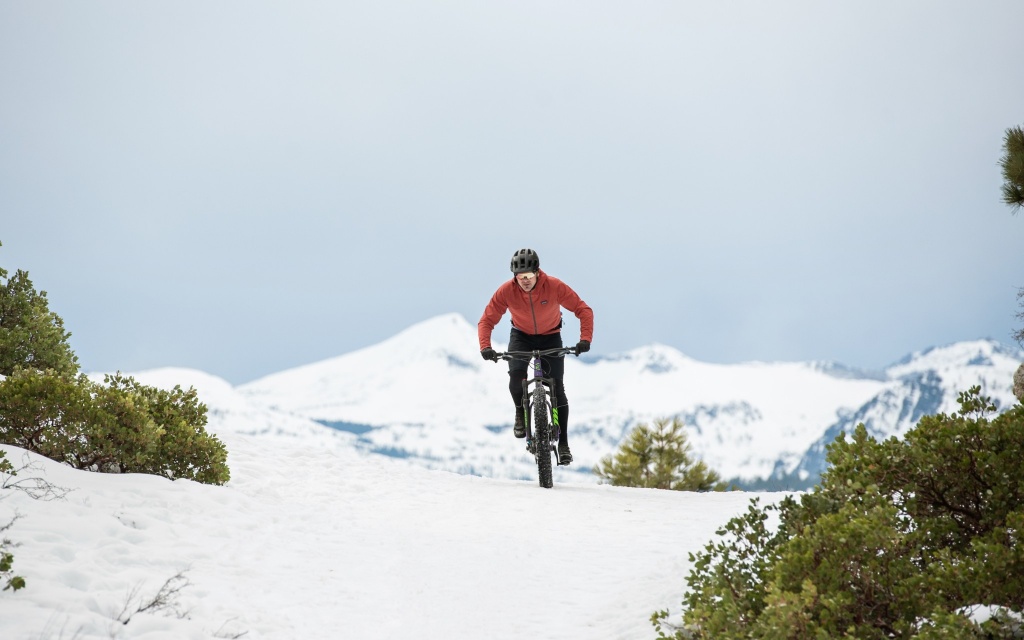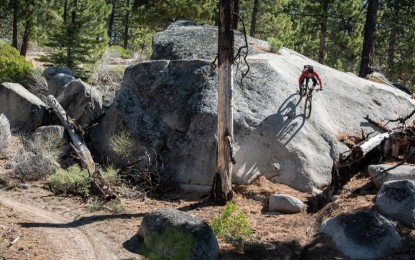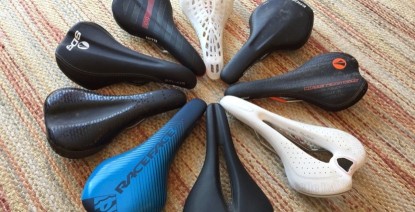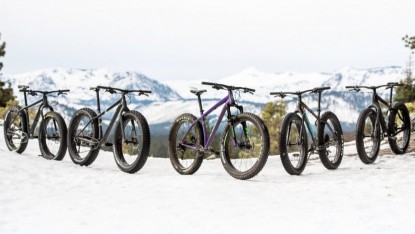What is a Fat Bike?
Fat bikes are essentially a specialized style of mountain bike that has clearance for extra-wide, or "fat", tires. Fat bikes are used primarily for snow, sand, or soft conditions riding where the extra width and air volume of the tires are most beneficial for floatation and traction. Packed snow, beaches, sandy desert terrain, and mixed snow and dirt conditions are the typical realm of the fat bike.
Fat bikes and fat biking are still a somewhat small slice of the overall mountain biking pie, and the use and popularity of them varies dramatically by region. That said, fat biking has grown in popularity in recent years, and it is more common to see people riding them now than ever before. While fat bikes are most common in cold and snowy environments, many people choose to ride them year-round on regular mountain bike trails, while others have opted to use them for bike packing and adventure riding.
As fat bikes have grown in popularity, so too have the places to ride them. Nowadays, it isn't uncommon to see fat bikers sharing groomed trails with cross-country skiers at nordic ski areas that allow them. In some regions, it is also common for there to be fat bike specific groomed trail systems. A quick internet search reveals many such trails systems scattered throughout the US from the east coast to the Pacific Northwest. Wherever and however you choose to ride a fat bike, there are more options on the market to choose from than ever before.
Fat Bike Considerations
Like any type of bike, there can be a lot to consider when making a fat bike purchase. As the fat bike market continues to expand, choosing which fat bike is the best for you, your riding style, and the places you ride has become more challenging than it once was. Fat bikes come in all shapes, sizes, frame materials, wheel sizes, tire widths, rigid or with suspension, it can be difficult to wrap your head around it all. We hope the following information helps to make sense of what could potentially be a confusing decision.
Frame Material
Traditionally, most fat bike frames were made of either aluminum or steel, with a few boutique manufacturers making carbon fiber or titanium frames. As the fat bike market has grown, more large manufacturers are producing fat bikes which has dramatically increased the number of carbon fiber options in recent years. Each material has its merits, and ultimately it will come down to personal preference and a cost/benefit analysis for the consumer. Aluminum is very cost-effective with lower material and production costs and a relatively high strength to weight ratio. In general, aluminum is slightly heavier than carbon, though it costs significantly less. Carbon fiber has a very high strength to weight ratio and it generally results in lightweight and stiff, responsive frames. While carbon fiber weighs less it does cost significantly more than aluminum due to higher material and production costs. As fat bikes become more mainstream, steel is becoming more of a boutique material for frame production. Steel is a relatively inexpensive material with a low production cost and a comfortable ride quality, though it is a bit heavier than either aluminum or carbon fiber.
Rigid or Suspension
Fat bikes are one segment of the sport of mountain biking where rigid, no suspension, bikes are still quite common. A rigid frame is the simplest type of frame to produce with no suspension at the front or rear of the bike. Most fat bike riders tend to ride on smooth snow and dirt surfaces where suspension may be considered unnecessary. Suspension components also add significantly to the cost of a complete bike, so rigid bikes are typically less expensive than their suspended counterparts.
Front Suspension
Many fat bikes can be purchased with a suspension fork or have one added as an aftermarket purchase. There are a handful of companies producing suspension forks for fat bikes including Manitou, RockShox, Lauf, and several others. Adding some front suspension helps to take the edge off when riding in less than ideal conditions and is a huge benefit for riders who use their fat bikes for a range of terrain and conditions. Front suspension may increase the versatility of a fat bike, especially for riders who intend to use theirs year-round, or who ride regular mountain bike trails as opposed to smooth and soft conditions exclusively. If adding a suspension fork to your fat bike, be sure to do a little research to make sure it is compatible with your frame and components before diving in. Many newer frames are designed to work with modern suspension forks, though not all will be compatible.
Full Suspension
Full suspension fat bikes are less common than their rigid or front suspension counterparts, though there are a number of smaller manufacturers making full squish models. If you take your fat biking seriously, ride rough conditions regularly, or you ride your fat bike year-round, it may make sense for you to check out a full-suspension model.
Tires
The width of the tires is the primary defining feature of a fat bike. Most fat bike tires range in width from 3.8-inches up to 5-inches. Generally speaking, the wider a tire is, the more floatation and traction it will provide. Likewise, the narrower a tire is, the more "normal" it will feel when riding dirt or regular trails. All fat bike tires have lots of girth and air volume so you can run very low tire pressures, less than 10psi, which further helps to enhance floatation and traction on soft surfaces. If you are exclusively riding on snow, a fatter tire will generally be a better choice, whereas if you plan to ride just dirt or a mix of dirt and snow, a narrower tire will likely suit you better. Fat bike tires also come in a huge variety of tread patterns for varying conditions and to suit rider preferences. Some fat bike tires are even stud-able to enhance traction on extra firm or icy surfaces.
Frame Clearance
Fat bike manufacturers spec the tires on their complete builds. If you are replacing your fat bike tires, be sure to check the clearance of your frame and fork. While many fat bikes have clearance to accommodate the widest tires, some may not and this varies from model to model.
Rim Width
Just like the tires, the rims also come in varying widths. Fat bike rims typically range in width from around 65mm up to around 100mm. Narrower rims are intended for use with narrower tires. A good example is the 65mm rims on the Kona Wozo that are paired with 3.8-inch tires. Likewise, wider rims work best with wider tires. Matching your tire and rim width will help to ensure that your tire's tread profile is most effective, it will also decrease the likelihood of burping or blowing your tire off the rim while running super-low pressures.
Tubes or Tubeless
Just like regular mountain bikes, many fat bike wheels and tires can be set up tubeless. Running a tubeless setup is a great way to improve ride quality, decrease the likelihood of flats, and reduce the overall weight of your bike. Fat bike tubes are quite large and their weight is not insignificant, removing them from your bike will likely result in notable weight reduction. Before switching to tubeless be sure that both your rims and tires are tubeless compatible.
Wheels
Most modern fat bikes come with either 26-inch or 27.5-inch wheels. Due to the massive size of the tires mounted to them, each wheel size basically ends up having the effective diameter of the next wheel size up. On complete builds, the manufacturer has typically chosen the wheel size that they think works best for the bike they have designed. In our experience, the differences in performance on fat bikes aren't incredibly noticeable between the wheel sizes, however, a larger diameter wheel will theoretically provide improved rolling speed and roll-over characteristics.
Axles
Due to the massive size of fat bike tires, fat bike wheels have much wider hubs, axles, and rim dimensions than regular mountain bikes. The front axle of a fat bike is typically 150 x 15mm, while the rear axle is usually either 197 x 12mm or 177 x 12mm. Generally, bikes that have been designed to accommodate tires up to 5-inches wide will have a wider rear axle, while some bikes that are intended for use with slightly narrower tires may use the narrower rear axle.
Materials
Like any other type of cycling, wheels for fat bikes come in various materials and price points. Basic fat bike wheels will serve the majority of casual riders well enough, but those looking to lighten up their ride or enhance all-around performance have a multitude of aftermarket options. Fat bike wheels come in aluminum or carbon fiber, and those looking to add a little bling to their ride can certainly do so by upgrading their wheelset.
Gearing
Since fat bikes are typically ridden in snow, sand, and soft dirt conditions, most fat bikers will typically run somewhat lower gearing to compensate for the increased drag created by the heavier weight of the bike, massive contact patch of the tires, and the surface conditions. Most of the fat bikes we've tested come with 1x drivetrains with 10 or 12-speed drivetrains. Our testers are big fans of 12-speed drivetrains for the huge gear range they offer. When compared to a regular mountain bike, most manufacturers spec a smaller front chainring to provide more low range.
Q-Factor
The Q-factor of a bike refers to the width between the outside of your cranks arms or the distance between your feet. Due to the massive width of the tires on a fat bike, the rear axle and chainstays need to be wider to accommodate them, so the bottom bracket is typically wider and the Q-factor is also wider as a result. Most fat bikes have a Q-factor of around 200mm, and this wider stance has a noticeably different feel than a typical mountain bike which falls closer to 170mm. A narrower Q-factor is said to be more efficient and feel more natural for most riders, and some fat bikes with narrower tires may be able to keep the Q-factor lower than others. An example of this is the Rocky Mountain Suzi-Q which features a 177mm wide rear axle and a narrower Q-factor, though its rear tire clearance is limited as a result.
Versatility
While fat bikes are typically used for snow or soft conditions riding, many models are more versatile than you might expect. Many riders use fat bikes for year-round riding, and some are ideal for bike packing and adventurous riding. Some manufacturers equip their frames with numerous water bottle mounts, frame pack mounts, 3-pack fork mounts, or rack mounts to easily attach your various bike packing bags and accessories. Other manufacturers are giving their bike more progressive geometries or suspension forks to enhance their versatility to everyday trail riding as well as winter riding conditions.
Accessories
Fat biking, specifically cold weather riding, has spawned a whole market of accessories for this type of riding. Hand covers or pogies, winter riding shoes, gloves, and clothing have all been developed to keep riders comfortable and enhance the fat biking experience. A handful of companies also make frame bags and accessory mounts to carry whatever it is you might need for your next adventure. Whatever your needs, you can rest assured that there is probably a product to meet it.
Conclusion
If you're considering buying a fat bike, our advice is: do it! Whether you're looking to do some winter riding to maintain your cycling fitness, or you're just looking for a new way to approach the trails or get out on adventures, a fat bike is an excellent addition to your bike quiver. We know there's a lot consider when making any new bike purchase, and we hope the information presented here helps in your decision making process.

